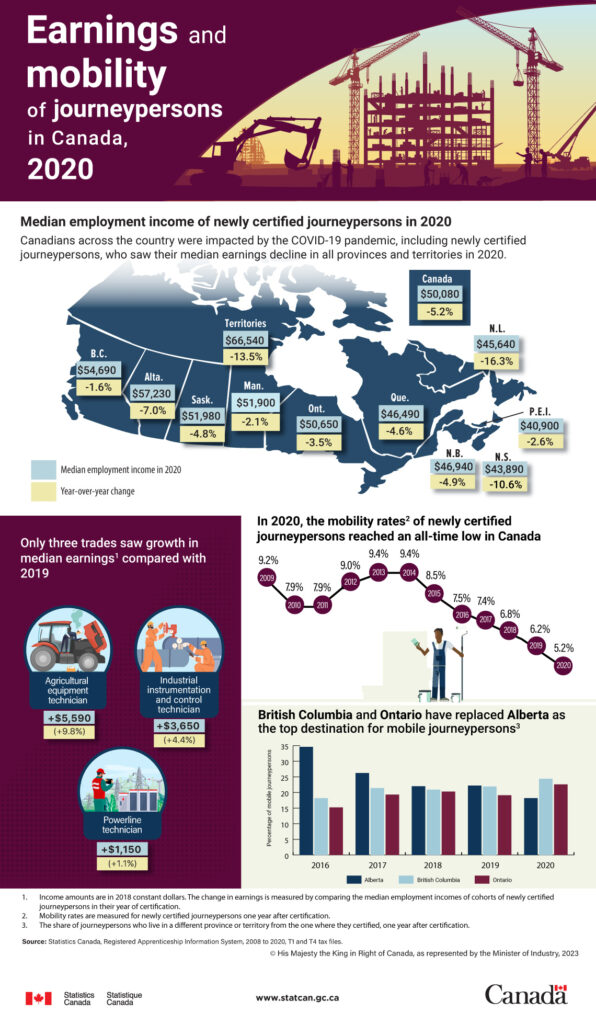
StatCan: Pandemic dropped income of newly certified journeypersons
By Adam Freill
Construction LabourThe onset of the COVID-19 pandemic in 2020 had a negative impact on the economy as a whole, and on new journeypersons, in particular.

Earnings and mobility of journeypersons in Canada, 2020.
(Source: Statistics Canada, Registered Apprenticeship Information System, 2008 to 2020, T1 and T4 tax files.)
Newly certified journeypersons were hit hard in the paycheque as a result of the COVID-19 pandemic, reports Statistics Canada. While jobs in construction were not as restricted as many other skilled trades sectors, the general averages across all trades indicate a lower median employment income for new journeypersons in 2020.
According to research compiled by the data organization, the take-up rates of the Canada Emergency Response Benefit among skilled tradespeople was higher than the general population, with 38.4 per cent of tradespeople taking the benefit versus 35.2 per cent. Overall, journeypersons who newly certified in 2020 earned a median employment income of $50,080 that year, which marked a 5.2 per cent drop compared with what those who certified in 2019 earned. This also represented one of the lowest median employment incomes of newly certified journeypersons since Statistics Canada started tracking such data in 2008.
The median employment income of journeypersons largely depends on the state of the local labour market and the economy in general. In 2020, the median employment income of newly certified journeypersons continued to be highest in the territories (down 13.5 per cent to $66,540) and Alberta (down seven per cent to $57,230). While both jurisdictions experienced significant drops, it was Newfoundland and Labrador that recorded the largest decline from 2019, falling more than 16 per cent.
Only 3 of the 31 trades saw growth in the median earnings of newly certified journeypersons from 2019 to 2020, namely agricultural equipment technicians (up 9.8 per cent), industrial instrumentation and control technicians (up 4.4 per cent) and powerline technicians (up 1.1 per cent). The remaining trades experienced decreases ranging from 0.4 per cent to 31.2 per cent. Trades that rely heavily on interactions with the public decreased the most.
The pandemic also impacted journeyperson mobility. In 2020, one year after certification, 5.2 per cent of journeypersons either lived or worked in a province or territory other than their place of certification. This marked the lowest national mobility rate of journeypersons since the data series started in 2008, and a continued downward trend for a third year.




